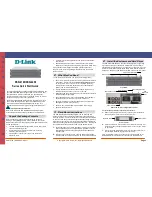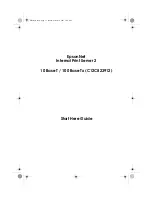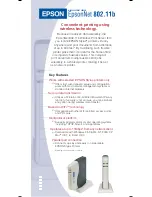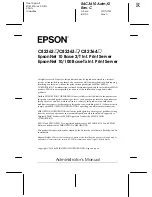
41
40
SuperServer E100-9APP User's Manual
Chapter 5: BIOS
XHCI Hand-Off
This is a work-around solution for operating systems that do not support XHCI (Extensible
Host Controller Interface) hand-off. The XHCI ownership change should be claimed by the
XHCI driver. The settings are
Enabled
and Disabled.
EHCI Hand-Off
This item is for the Operating Systems that do not support Enhanced Host Controller Interface
(EHCI) hand-off. When this item is enabled, EHCI ownership change will be claimed by the
EHCI driver. The settings are Enabled and
Disabled
.
Port 60/64 Emulation
This feature enables or disables I/O port 60h/64h emulation support. This should be enabled
for complete USB keyboard legacy support for non-USB-aware Operating Systems. The
options are Disabled and
Enabled
.
USB 3.0 Support
Select Enabled for USB 3.0 support. The options are Smart Auto,
Auto,
Disabled, and
Enabled.
EHCI1
Select Enabled to enable EHCI (Enhanced Host Controller Interface) support on USB 2.0
connector #1 (at least one USB 2.0 connector should be enabled for EHCI support). The
options are Disabled and
Enabled
.
EHCI2
Select Enabled to enable EHCI (Enhanced Host Controller Interface) support on USB 2.0
connector #2 (at least one USB 2.0 connector should be enabled for EHCI support). The
options are Disabled and
Enabled
.
XHCI Pre-Boot Driver
Select Enabled to enable XHCI (Extensible Host Controller Interface) support on a pre-boot
drive specified by the user. The options are Enabled and
Disabled
.
SATA Configuration
When this submenu is selected, the AMI BIOS automatically detects the presence of the SATA
devices that are supported by the Intel PCH chip and displays the following items:
SATA Controller
This item enables or disables the onboard SATA controller supported by the Intel PCH chip.
The options are
Enabled
and Disabled.
Memory RAS (Reliability_Availability_Serviceability) Configuration
Use this submenu to configure the following Memory RAS settings.
Patrol Scrub
Patrol Scrubbing is a process that allows the CPU to correct correctable memory errors
detected on a memory module and send the correction to the requestor (the original
source). When this item is set to Enabled, the IO hub will read and write back one cache
line every 16K cycles, if there is no delay caused by internal processing. By using this
method, roughly 64 GB of memory behind the IO hub will be scrubbed every day. The
options are
Enable
and Disable.
Patrol Scrub Interval
This feature allows you to decide how many hours the system should wait before the
next complete patrol scrub is performed. Use the keyboard to enter a value from 0-24.
The Default setting is
24
.
Demand Scrub
Demand Scrubbing is a process that allows the CPU to correct correctable memory errors
found on a memory module. When the CPU or I/O issues a demand-read command, and
the read data from memory turns out to be a correctable error, the error is corrected and
sent to the requestor (the original source). Memory is updated as well. Select Enable to
use Demand Scrubbing for ECC memory correction. The options are
Enable
and Disable.
Device Tagging
Select Enable to support device tagging. The options are
Disable
and Enable.
South Bridge
The following South Bridge information will display:
•
USB Configuration
•
USB Module Version
•
USB Devices
Legacy USB Support
This feature enables support for legacy USB devices. Select Auto to disable legacy support
if USB devices are not present. Select Disable to have USB devices available only for EFI
applications. The options are Enabled,
Disabled
and Auto.
















































